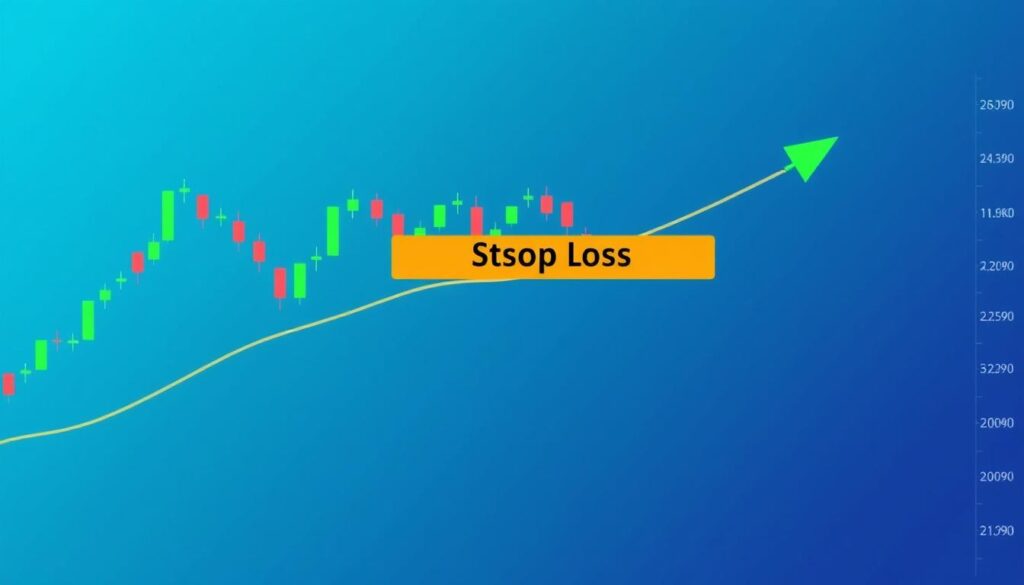Trendline analysis is a powerful tool used to identify stock market trends, helping traders and investors make informed decisions. Trendlines are straight lines connecting key price levels to visualize the direction of the price trend. They can be horizontal or diagonal and are usually viewed from left to right on a price chart. By using trendline analysis, you can gain a competitive edge in the market and improve your trading decisions.
Trendline analysis is essential for understanding stock market trends and making profitable trades. It helps traders identify potential support and resistance levels, which can inform their entry and exit points. By combining trendlines with other technical indicators, traders can increase their trade success probability and reduce risk.
Table of Contents
Key Takeaways
- Trendline analysis helps identify stock market trends and potential support and resistance levels.
- Trendlines can be used to determine entry and exit points for trading.
- Combining trendlines with other technical indicators can increase trade success probability.
- Trendline analysis is essential for understanding stock market trends and making informed trading decisions.
- Trendlines are a fundamental tool in technical analysis across various segments of capital markets.
- Trendline analysis can be used in conjunction with other technical indicators and fundamental analysis to make informed trading decisions.
- Trendlines help traders identify potential bullish and bearish reversals in the market.
Understanding the Basics of Trendlines
Trendlines are a fundamental tool in technical analysis, used to identify trends and predict future price movements. The trendline definition is a line that connects a series of prices or data points to show the direction and strength of a trend. By understanding trendlines, traders can identify support and resistance levels, which are crucial in making informed trading decisions.
A trendline can be applied to any time frame, from short-term to long-term, and can be used to identify trends in various markets, including stocks, forex, and commodities. The key to drawing a trendline is to connect a series of highs or lows, depending on the direction of the trend. For example, in an uptrend, a trendline can be drawn by connecting a series of lows, while in a downtrend, a trendline can be drawn by connecting a series of highs.
Support and resistance levels are critical components of trendline analysis. A support level is a price level at which a trendline intersects with a series of lows, indicating a level at which the price is likely to bounce back. A resistance level, on the other hand, is a price level at which a trendline intersects with a series of highs, indicating a level at which the price is likely to encounter resistance. By identifying these levels, traders can make informed decisions about when to enter or exit a trade.
- Consistency is key when drawing trendlines
- Trendlines should be drawn based on significant price points, such as highs and lows
- Support and resistance levels should be identified and used to inform trading decisions
By understanding the basics of trendlines and how to apply them, traders can gain a valuable tool in their technical analysis toolkit. In the next section, we will explore the different types of market trends and how trendlines can be used to identify and trade them.
The Three Main Types of Market Trends
Understanding market trends is crucial for making informed investment decisions. There are three primary types of market trends: uptrend, downtrend, and sideways trend. An uptrend is characterized by consistent new high points and higher low points, indicating growth and increasing demand. In contrast, a downtrend is marked by lower highs and lower lows, signaling a decline in asset value. A sideways trend occurs when prices move within a stable range, showing stability and no clear direction.
To identify these trends, investors can use trendlines, which involve connecting two or more significant lows in an uptrend or two or more significant highs in a downtrend. Learning about different types of investments can also help investors make informed decisions. Uptrend lines act as support, indicating that net demand is increasing, while downtrend lines act as resistance, indicating that net supply is increasing.
Here are the key characteristics of each trend:
- Uptrend: higher highs and higher lows, indicating growth
- Downtrend: lower highs and lower lows, signaling decline
- Sideways trend: prices move within a stable range, showing stability
By understanding these trends and using trendlines effectively, investors can mitigate risk and make informed decisions about buying and selling stocks. Whether it’s an uptrend, downtrend, or sideways trend, recognizing the direction of the market is essential for successful investing.
Essential Tools for Drawing Accurate Trendlines
To draw accurate trendlines, it’s crucial to have the right tools and techniques. In technical analysis, charting tools play a significant role in identifying trends and patterns. When combined with other technical indicators, these tools can help traders make informed decisions.
Choosing the right timeframe is essential for drawing accurate trendlines. A minimum of two points is required to draw a trendline, and the more points used, the more validity is attached to the support or resistance level represented by the trendline. Technical analysis involves analyzing price action and trends to predict future market movements.
Choosing the Right Timeframe
Higher timeframes are recommended for drawing trendlines as they typically lead to stronger and more significant bounces or reversals when the trendline is breached. Trendlines on daily charts can extend over weeks, months, or even years, providing clear direction and significant trading opportunities.
Identifying Significant Peaks and Troughs
Identifying significant peaks and troughs in price action is crucial for drawing reliable trendlines. Trendlines should slope with the trend: upward for uptrends and downward for downtrends. Uptrend lines are positioned underneath prices, indicating potential support areas, while downtrend lines act as resistance areas and must be drawn above prices.
Required Technical Indicators
In addition to charting tools, other technical indicators such as moving averages and volume indicators can enhance trendline analysis. These indicators can provide confirmation of trendline breaks and help traders identify potential trading opportunities. By combining technical analysis with charting tools and other indicators, traders can develop a comprehensive trading strategy.
| Timeframe | Trendline Break | Typical Move |
|---|---|---|
| Intraday | 20-30 pips | Correction |
| Daily | 30-40 pips | Trend reversal |
How to Use Trendlines in Different Market Conditions
Understanding how to apply trendline analysis in various market conditions is crucial for traders. As long as prices remain above the trend line, the uptrend is considered solid and intact. A break below the uptrend line indicates that net demand has weakened, and a change in trend could be imminent. This knowledge is essential for developing effective trading strategies in different market conditions.
In different market conditions, trendlines can be used to identify major support or resistance areas. For instance, an upward-sloping trendline implies higher demand and a consequent increase in price, while a downward-sloping trendline implies higher supply and a decrease in prices. Traders use angles between 30-45 degrees to assess the strength of a trend.
Bull Market Strategies
In a bull market, trendlines can be used to ride uptrends and identify potential pullback opportunities. A trendline that has more than two touch points is considered strong, while having more than five touch points increases the chances of the trendline breaking significantly.
Bear Market Applications
In a bear market, trendlines can help traders navigate downtrends and spot potential short-selling opportunities. Shorting or selling a stock when it runs into resistance along a trendline can be a profitable trade.
Sideways Market Techniques
In a sideways market, trendlines can be used to trade range-bound markets effectively. Trendlines make it easier to establish areas of support and resistance, reducing stress in finding entry and exit points.
By understanding how to use trendlines in different market conditions, traders can develop effective trading strategies and maximize profits. It is essential to combine trendlines with other technical indicators and tools to confirm trading decisions and manage risk effectively.
Some key considerations for using trendlines in different market conditions include:
- Draw trendlines at higher timeframes for better reliability
- Use angles between 30-45 degrees to assess the strength of a trend
- Combine trendlines with other technical indicators and tools to confirm trading decisions
- Always trade with a stop loss to manage risk effectively
By following these guidelines and understanding how to use trendlines in different market conditions, traders can improve their trading strategies and achieve better results in the market.
Common Trendline Patterns and Their Meanings
When analyzing chart patterns, it’s essential to understand the different types of trendlines and their implications for future price action. Trendlines can be used to identify potential trend continuations or reversals, and they can be combined with other technical analysis tools to form a comprehensive trading strategy.
Some common trendline patterns include ascending triangles, descending triangles, wedges, and channels. These patterns can be used to identify areas of support and resistance, and they can help traders make informed decisions about when to enter or exit a trade.
Here are some key points to consider when analyzing trendline patterns:
- Uptrend lines are formed by connecting two or more low points, with at least three points needed for a valid trend line.
- Downtrend lines are formed by connecting two or more high points, with at least three points needed for a valid trend line.
- Trend lines become more valid as more points are used to draw them.
By understanding these trendline patterns and their meanings, traders can gain a better understanding of price action and make more informed decisions about their trades. Whether you’re a beginner or an experienced trader, analyzing chart patterns and trendlines can help you develop a successful trading strategy.
| Trendline Pattern | Meaning |
|---|---|
| Ascending Triangle | Bullish trading pattern |
| Descending Triangle | Bearish trading pattern |
| Wedge | Temporary interruption during uptrend or downtrend |
Breaking Down Support and Resistance Trendlines
Trendlines are a crucial tool in technical analysis, helping traders identify areas of support and resistance. These levels are essential in determining the direction and potential reversal points of a trend. By understanding how to draw and interpret trendlines, traders can gain valuable insights into market dynamics and make more informed decisions.
Support and resistance levels can be identified through single price levels or zones on charts, indicating areas of buying and selling interest. The longer the time period in chart analysis, the more significant the support and resistance levels become. Traders often anticipate future market reactions based on past support and resistance levels.
Identifying Valid Support Levels
Valid support levels can be identified using upward trendlines, which show the direction and speed of price movement. These levels are critical in determining potential buying opportunities. On the other hand, downward trendlines can help identify resistance points, where selling pressure may overwhelm buying interest.
Recognizing Resistance Points
Resistance points are areas where the price may struggle to break through, due to increased selling pressure. By recognizing these points, traders can adjust their strategies to avoid potential losses. Breakout trading is a popular strategy that involves trading on the breakout of a resistance level, with the expectation of a significant price movement.
Managing Breakouts and Breakdowns
Managing breakouts and breakdowns is critical in trendline analysis. Traders need to confirm breakouts and avoid false signals, which can be achieved by combining trendlines with other technical indicators. By doing so, traders can increase their chances of success and minimize potential losses.
By understanding support and resistance trendlines, traders can develop effective strategies for breakout trading and trend analysis. This knowledge can help traders make more informed decisions and increase their chances of success in the markets.
Advanced Trendline Techniques
Mastering trendline trading is crucial for identifying market trends and making informed trading decisions. To take your analysis to the next level, it’s essential to incorporate advanced trendline techniques, such as multiple timeframe analysis. This approach involves using trendlines across different timeframes to gain a more comprehensive market view. By analyzing trendlines on various timeframes, you can better understand the trend strength and make more accurate predictions.
A key concept in advanced trendline techniques is the use of internal trendlines. These trendlines help filter out market noise and identify the underlying trend more accurately. Additionally, trendline indicator tools can make drawing trendlines easier and more accurate. Experts often use top trendline trading methods by mixing trendlines with tools like moving averages and Bollinger Bands.
Some effective trendline techniques include:
- Trend line bounces
- Trend line breakouts
- Trend line angle measurements
These techniques can help you better understand the market and make more informed trading decisions. By incorporating trendlines into your technical analysis toolkit and combining them with other indicators, you can significantly improve your technical analysis tools and increase your chances of success in the market.
Remember, effective trading requires a complete approach with different tools and techniques. By mastering advanced trendline techniques and incorporating them into your trading strategy, you can optimize your trendline trading and make more money in the financial markets.
Combining Trendlines with Other Technical Indicators
Technical analysis involves using various tools to make informed trading decisions. One effective approach is to combine trendline analysis with other technical indicators. This integration enhances the accuracy of trading decisions by providing a more comprehensive view of market trends. Indicator combinations can be categorized into three main classes: momentum indicators, trend-following indicators, and volatility indicators.
When combining trendlines with other indicators, it’s essential to avoid redundancy. Using multiple indicators that show similar information can lead to duplicate signals and confusion. For instance, using three momentum indicators like MACD, RSI, and Stochastic can provide similar price momentum information, which may not add significant value to the analysis.
Instead, traders can focus on combining indicators from different classes to gain a more nuanced understanding of market trends. For example, combining the RSI with Bollinger Bands provides complementary information on momentum and trend phases. This combination can help traders identify overbought or oversold conditions and potential trend reversals.
Effective Indicator Combinations
- RSI and Bollinger Bands: Provides insights into momentum and trend phases
- ADX and Moving Averages: Helps identify trend strength and potential reversals
- Volume Analysis and Trendlines: Validates trendline breaks and confirms trend strength
By using the right combination of technical indicators, traders can develop more effective trading strategies. It’s crucial to remember that using more indicators is not always better. Instead, focus on finding the right combination of tools that complement each other and provide unique insights into market trends.
Risk Management When Trading with Trendlines
Effective risk management is crucial when trading with trendlines. This involves using trendlines to place strategic stop-loss orders, protecting your capital while allowing for natural market fluctuations. Position sizing techniques based on trendline analysis help determine appropriate trade sizes relative to your risk tolerance.
A break above the downtrend line indicates that the net-supply is decreasing and that a trend change could be imminent. To manage risk, traders can set stop-loss orders slightly outside the trendline and calculate take profits based on the channel width for a favorable risk-to-reward ratio. This approach helps protect gains made after a trendline break.
Some key considerations for risk management when trading with trendlines include:
- Setting stop losses outside the trendline
- Calculating take profits based on the channel width
- Practicing in a demo account before live trading
- Regularly reviewing trading data and keeping a trading journal
By incorporating these strategies into your trading plan, you can effectively manage risk and increase your chances of success when trading with trendlines. Remember to always prioritize position sizing and stop-loss placement to protect your capital and maximize your returns.
| Risk Management Strategy | Description |
|---|---|
| Stop-loss placement | Setting stop losses outside the trendline to limit losses |
| Position sizing | Determining trade sizes based on trendline analysis and risk tolerance |
| Take profit calculation | Calculating take profits based on the channel width for a favorable risk-to-reward ratio |
Real-World Examples of Successful Trendline Trading
Trendline trading strategies can be applied across different trading methodologies and financial markets. By examining trading case studies, traders can gain valuable insights into the effectiveness of trendlines in various market conditions.
One notable example is the chart of Microsoft (MSFT), which shows an uptrend line that has been touched four times. After the third touch in Nov-99, the trend line was considered a valid support line, demonstrating the importance of market analysis examples in identifying potential trading opportunities.
Using a three-step technique to draw trendlines involves zooming out your charts, drawing only the most obvious levels, and adjusting to get the most touches on your trendline. This approach can improve accuracy in predicting market turning points and identifying high probability trendline bounce trades.
By analyzing trading case studies and market analysis examples, traders can develop a deeper understanding of trendline trading strategies and their applications in various financial markets.
| Market | Trendline Application |
|---|---|
| Stock Market | Identifying support and resistance levels |
| Forex | Capitalizing on trend reversals |
| Cryptocurrency | Applying trendlines to mean-reverting strategies |
Common Mistakes to Avoid in Trendline Analysis
When it comes to trendline analysis, even experienced traders can fall into common pitfalls. Trading errors can occur when forcing trendlines where they don’t exist, over-relying on a single trendline, or ignoring other important technical and fundamental factors. To avoid these trendline pitfalls, it’s essential to recognize the mistakes and develop strategies to overcome them.
Some common trend line errors include using incomplete candle data, arbitrarily drawing angled trend lines, forcing parallel channel lines, extending trend lines indefinitely, and ignoring time frame context. For instance, plotting lines using only open and close prices ignores the full range of price action during a period. Valid trend lines need to touch at least two definitive swing points on the chart to avoid introducing bias into analysis.
- Using trend lines without considering the time frame context can lead to misinterpretations as different time frames provide different insights.
- Extending trend lines indefinitely forward provides little accuracy as markets evolve and price swings exceed prior ranges.
- Ignoring time frame context can lead to incorrect analysis of trend line touches and breaks.
By being aware of these common mistakes, traders can improve the accuracy and reliability of their trendline-based trading decisions.
Accurate trendline analysis requires a deep understanding of market trends, technical indicators, and risk management strategies. By avoiding common mistakes and staying informed, traders can make more informed decisions and achieve their investment goals.
Creating Your Personal Trendline Trading Strategy
Developing a personalized trendline trading strategy is crucial for success in the financial markets. By incorporating trendlines into your trading system development, you can create a systematic approach to analyzing market trends and making informed decisions. The key to a successful trendline strategy is to combine it with other technical indicators and to continuously test and validate its effectiveness through backtesting.
Building a Systematic Approach
A systematic approach to trendline analysis involves identifying significant highs and lows on a price chart and drawing trendlines to connect them. This helps to identify support and resistance levels, trend changes, and breakouts. By focusing on major swing points and adjusting for the maximum number of touches, you can create a reliable trendline that reflects the market’s underlying trend.
Testing and Validation Methods
Once you have developed your trendline strategy, it’s essential to test and validate its effectiveness through backtesting. This involves applying your strategy to historical data to see how it would have performed in different market conditions. By analyzing the results, you can refine your strategy and make adjustments as needed to improve its performance.
Performance Tracking Tools
To monitor the effectiveness of your trendline-based trades, you can use performance tracking tools such as profit/loss ratios, win/loss ratios, and drawdown analysis. These tools help you to identify areas for improvement and make adjustments to your strategy to optimize its performance. By continuously tracking and refining your strategy, you can stay ahead of the market and achieve your trading goals.
| Strategy | Backtesting Results | Performance Metrics |
|---|---|---|
| Trendline Breakout | 75% win rate | 2:1 profit/loss ratio |
| Trendline Reversal | 60% win rate | 1.5:1 profit/loss ratio |
The Future of Trendline Analysis in Digital Trading
As trading becomes increasingly digital and automated, the role of trendline analysis is evolving. With the integration of algorithmic trading and AI in technical analysis, trendline analysis is becoming more sophisticated. Most charting programs now allow users to set the scale as arithmetic or semi-log, enabling more accurate trendline identification.
The use of AI in technical analysis is enhancing trendline identification and interpretation. This technology can analyze large amounts of data, identifying patterns and trends that may not be visible to the human eye. As a result, traders can make more informed decisions, using algorithmic trading systems to execute trades based on trendline analysis.
Some key benefits of using trendline analysis in digital trading include:
- Improved accuracy in identifying trends and patterns
- Enhanced decision-making capabilities
- Increased efficiency in executing trades
As the trading landscape continues to evolve, it’s essential for traders to stay up-to-date with the latest developments in trendline analysis and algorithmic trading. By leveraging AI in technical analysis, traders can gain a competitive edge, making more informed decisions and executing trades with greater precision.
| Trendline Analysis Benefits | Description |
|---|---|
| Improved Accuracy | AI-enhanced trendline analysis provides more accurate trend identification |
| Enhanced Decision-Making | Traders can make more informed decisions using AI-driven trendline analysis |
| Increased Efficiency | Algorithmic trading systems execute trades based on trendline analysis, increasing efficiency |
Conclusion
As we conclude this comprehensive guide on using trendlines for stock market analysis, the key takeaway is that trendline mastery requires continuous learning and practice. While trendlines are a powerful tool in the arsenal of any technical trader, they should be used in conjunction with other forms of analysis for the best results.
By consistently applying and refining your trendline analysis skills, you’ll be well-equipped to navigate the complex world of stock market trading with greater confidence and precision. Remember, the true value of trendlines lies in their ability to help you identify areas of value within different market trends, ultimately leading to low-risk, high-reward trading opportunities.
So, don’t be afraid to experiment, test, and validate your trendline trading strategies. Embrace the journey of continuous learning – it’s the key to unlocking the full potential of this essential technical analysis tool. With dedication and a willingness to adapt, you can master the art of trendline trading and take your market performance to new heights.
FAQ
What is a trendline?
A trendline is a technical analysis tool used to identify the overall direction of a stock’s price movement. It is constructed by connecting significant points, such as highs and lows, on a price chart.
Why are trendlines crucial for traders and investors?
Trendlines are crucial for traders and investors because they help identify trends, support and resistance levels, and potential entry and exit points for trades. By understanding the psychology behind trendlines and how they reflect market sentiment, traders can gain a competitive edge in the market.
What are the three primary types of market trends?
The three primary types of market trends are uptrends, downtrends, and sideways trends. Trendlines can be used to identify each type of trend and understand the implications for trading strategies.
How do you draw accurate and meaningful trendlines?
To draw accurate and meaningful trendlines, you need to select the appropriate timeframe, identify significant peaks and troughs in price action, and use complementary technical indicators such as moving averages and volume indicators.
How can trendlines be applied in different market conditions?
Trendlines can be used in various market conditions, including bull markets, bear markets, and sideways markets. The strategies for using trendlines will vary depending on the prevailing market conditions.
What are some common trendline patterns and their implications?
Common trendline patterns include ascending triangles, descending triangles, wedges, and channels. These patterns can provide insights into potential trend continuations or reversals.
How can trendlines be used to identify support and resistance levels?
Upward trendlines can be used to identify valid support levels, while downward trendlines can help recognize resistance points. Understanding the dynamics of breakouts and breakdowns is crucial for managing these critical moments in trend analysis.
What are some advanced trendline techniques?
Advanced trendline techniques include multiple timeframe analysis, the use of trend strength indicators, and the application of internal trendlines to filter out market noise and identify the underlying trend more accurately.
How can trendline analysis be combined with other technical indicators?
Trendline analysis can be effectively combined with moving averages, the Relative Strength Index (RSI), and volume analysis to confirm trends, identify potential reversals, and gauge the strength of market movements.
How can trendlines be used for risk management in trading?
Trendlines can be used to place strategic stop-loss orders, determine appropriate position sizes based on risk tolerance, and set realistic profit targets to manage the risk-reward ratio effectively.
What are some real-world examples of successful trendline trading?
This guide will provide case studies on trendline analysis in the Bitcoin market, the stock market, and the forex market, demonstrating how these techniques can be applied in various trading environments.
What are common mistakes to avoid in trendline analysis?
Common mistakes include forcing trendlines where they don’t exist, over-relying on a single trendline, and ignoring other important technical and fundamental factors. Understanding these pitfalls can help improve the accuracy and reliability of your trendline-based trading decisions.
How can you develop a personalized trendline trading strategy?
Developing a personalized trendline trading strategy involves building a systematic approach, testing and validating your strategy through backtesting and forward testing, and utilizing performance tracking tools to continuously improve your techniques over time.
How is trendline analysis evolving in the digital trading landscape?
As trading becomes increasingly digital and automated, trendline analysis is being integrated into algorithmic trading systems, and artificial intelligence is being used to enhance trendline identification and interpretation. Understanding these technological advancements can help traders stay relevant in the rapidly changing trading environment.









